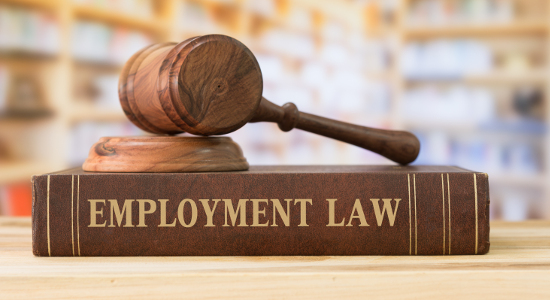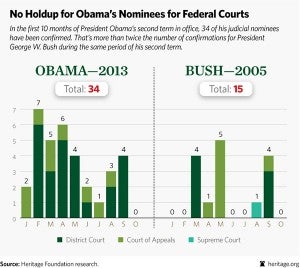How many Supreme Court appointments did Obama make?
The email said that the federal 6 th Circuit Court of Appeals had just ruled that the so-called Fair Sentencing Act of 2010 reducing the racist laws fixing the penalties for crack cocaine at 100 times those for powder cocaine to a somewhat less unfair ratio of 18 to 1 would not be applied retroactively to the thousands of people still serving ...
Who did Obama choose for the Supreme Court?
Sep 07, 2016 · by WorldTribune Staff, September 7, 2016 President Barack Obama's liberal transformation of the U.S. Court of Appeals has gone largely under the radar as most attention has focused on the Supreme ...
Did Obama reshape the Supreme Court?
Aug 08, 2016 · In November 2013, Senate Democrats got so frustrated by the GOP’s refusal to confirm any of Obama’s nominees to the D.C. Circuit, the influential appeals court on which Garland is chief judge ...
What is the difference between Obama and Trump’s judicial nominations?
Jan 12, 2017 · Because of Obama, Democratic appointees now have a 7-4 advantage on the D.C. panel, and those judges will play a major role in deciding cases during the Trump administration related to environmental regulations, health care, national security, consumer protections and challenges to executive orders.

Who did Obama vote against?
During the 109th Congress, then-Senator Obama voted against both of President George W. Bush 's nominees to the Supreme Court. In a speech announcing his opposition to John Roberts, Obama stated:
Who is the Chief Judge of the United States Court of Appeals for the District of Columbia Circuit?
On March 16, 2016, Obama nominated Merrick Garland, Chief Judge of the United States Court of Appeals for the District of Columbia Circuit, to replace Antonin Scalia.
What cancer did Ruth Bader Ginsburg have?
During most of Obama's presidency, there had been speculation about the potential retirement of Justice Ruth Bader Ginsburg, who turned 80 in 2013 and was previously diagnosed with colon cancer and pancreatic cancer.
When was Kagan confirmed?
Kagan was confirmed by the Senate on August 5, 2010, by a vote of 63–37. During his final year in office, Obama had an opportunity to fill a third Supreme Court vacancy, following the February 13, 2016, death of Associate Justice Antonin Scalia. On March 16, 2016, he nominated Merrick Garland, the chief judge of the United States Court ...
Who were the Supreme Court Justices in 2009?
Barack Obama and Joe Biden with Supreme Court justices in the court's conference room, on January 14, 2009, the week before the inauguration. Shown are Chief Justice Roberts and Justices Stevens, Thomas, Ginsburg, and Souter
Where was Antonin Scalia found?
On February 13, 2016, Associate Justice Antonin Scalia was found dead while vacationing at Cibolo Creek Ranch near Marfa, Texas. President Obama stated that he planned to nominate someone to replace Scalia on the Supreme Court. Scalia's death marked just the second time in sixty years that a sitting justice died.
When was Sotomayor sworn in?
Sotomayor was confirmed by the Senate on August 6, 2009, by a vote of 68–31, and was sworn in as an Associate Justice on August 8, 2009.
Who won the Pepsi lawsuit?
Noel Canning, a Pepsi distributor affected by the NLRB’s actions, filed suit claiming the board’s decisions were unlawful because Obama had no authority to appoint the three people needed for the Board to have a quorum. Noel Canning won.
Who is Ilya Shapiro?
Ilya Shapiro, a constitutional scholar with the Cato Institute and editor-in-chief of its “Supreme Court Review,” has been tracking the number of unanimous decisions against the Obama administration.
What power does the Constitution give the President?
The Constitution empowers the president to make appointments when the Senate is in recess — a power that has been used more creatively and aggressively as time has passed. In consequence, the Senate has been more creative in its efforts to avoid going into recess.
What is the D.C. Circuit?
The D.C. Circuit is the nation’s top regulatory court, responsible for scrutinizing many of the federal government’s most expensive and far-reaching actions. No wonder, then, that President Barack Obama.
How many vacancies are there in the Supreme Court?
While the court has three vacancies, they are not among the 32 “judicial emergencies” identified by the Administrative Office of the U.S. Courts—and the president hasn’t even made nominations to most of those seats. Moreover, the court’s caseload is among the lowest of the courts of appeals, at 88 cases per judge, and declining.
How many appeals cases were heard in 2007?
added to the overflow cases of previous years, the total was 62,846 cases waiting to be heard. Out of those 31,717 were terminated on merits alone and 28, 755 were terminated on procedural applications, meaning roughly 96% of appeals cases were not fully heard.
Who is the appellant in a case?
The individual who file for an appeal is the appellant and the opposing party is the appellee. The Circuit Court of Appeals decides whether they will hear the case, refuse to hear the case, or return it to the lower Court or District Court to be reheard or for retrial.
What is the federal circuit court?
They represent geographical areas of the U.S. as follows: The Federal Circuit Court in Washington D.C serves the Federal Government. The D.C. Circuit Court in Washington D.C. serves the District of Columbia. The 1st Circuit Court in Boston serves Massachusetts, Maine, New Hampshire, Rhode Island , and Puerto Rico.
Which circuit has jurisdiction over appeals?
The Federal Circuit of Appeals has nationwide jurisdiction over certain cases of appeal according to the subject matter, specialized trial Courts, U.S. Court of International Trade, U.S. Court of Federal Claims, and Appeals from District Courts in certain matters.
What are the circuit courts?
In the U.S. there are thirteen Circuit Courts of Appeals including eleven regional Circuit Courts, the Circuit Court of Washington D.C., and the Federal Circuit Court. They represent geographical areas of the U.S. as follows: 1 The Federal Circuit Court in Washington D.C serves the Federal Government 2 The D.C. Circuit Court in Washington D.C. serves the District of Columbia 3 The 1st Circuit Court in Boston serves Massachusetts, Maine, New Hampshire, Rhode Island , and Puerto Rico 4 The 2nd Circuit Court in New York serves New York, Connecticut , and Vermont 5 The 3rd Circuit Court in Philadelphia serves Pennsylvania, Delaware, New Jersey, and the U.S. Virgin Islands 6 The 4th Circuit Court in Richmond serves Virginia, Maryland, North Carolina, South Carolina , and West Virginia 7 The 5th Circuit Court in New Orleans serves Louisiana, Mississippi , and Texas 8 The 6th Circuit Court in Cincinnati serves Ohio, Kentucky, Michigan, and Tennessee 9 The 7th Circuit Court in Chicago serves Illinois, Indiana, and Wisconsin 10 The 8th Circuit Court in St. Louis serves Missouri, Arkansas, Iowa, Minnesota, Nebraska, North Dakota , and South Dakota 11 The 9th Circuit Court in San Francisco serves California, Alaska, Arizona, Hawaii, Idaho, Montana, Nevada, Oregon, Washington, Guam, and the Northern Mariana Islands 12 The 10th Circuit Court in Denver serves Colorado, Kansas, New Mexico, Oklahoma, Utah, and Wyoming 13 The 11th Circuit Court in Atlanta serves Georgia, Alabama , and Florida

Popular Posts:
- 1. what age can you give power of attorney
- 2. what is dsu judgment parental obligations fl630 (filed by attorney for cssd; )
- 3. what to bring to an attorney consultation
- 4. who was the district attorney during oj's trial
- 5. how a law firm works together proactively in assisting an attorney and the defense
- 6. how did stormy daniels attorney get information on michael cohen
- 7. how to be an assistant us attorney
- 8. want to give up power of attorney, what are options
- 9. who is virginia's attorney general office
- 10. how to do power of attorney for relatve overseas